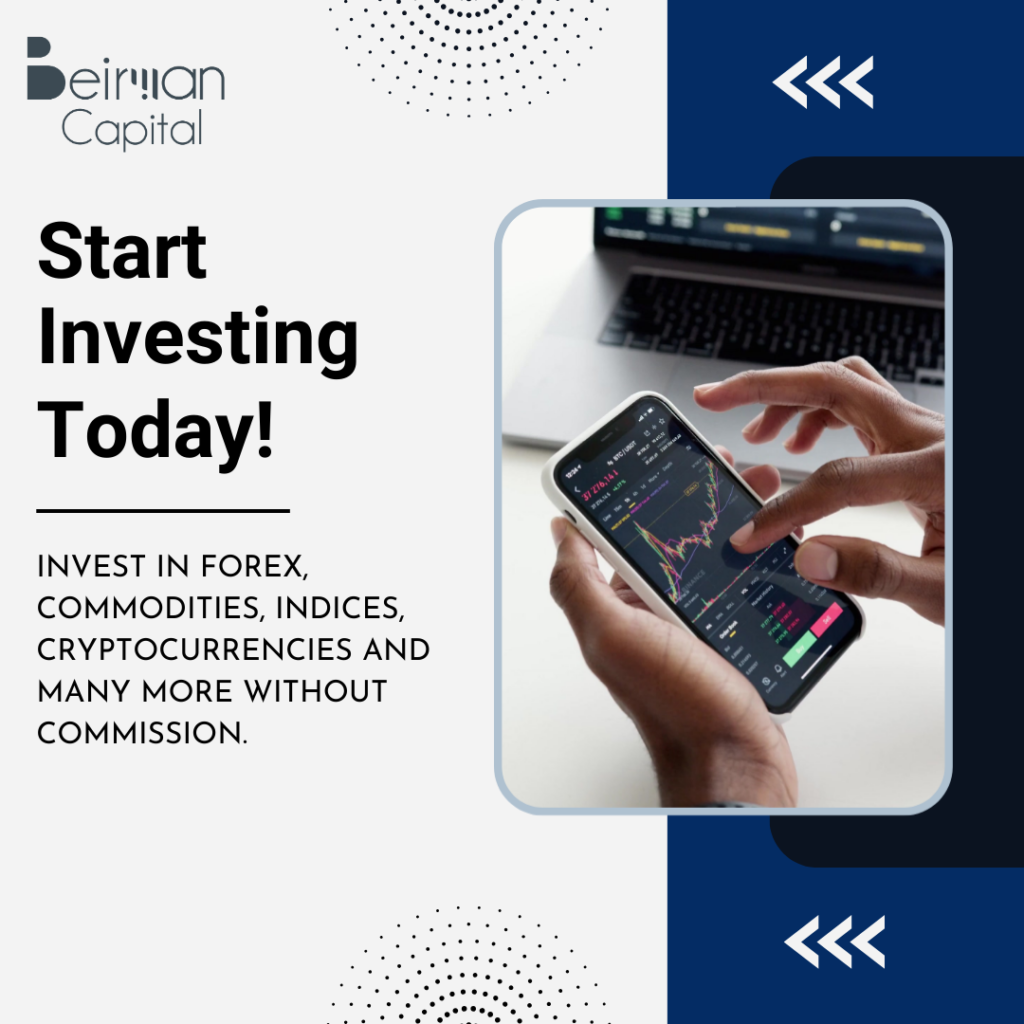Bid vs Ask Price: Meaning, Spread, and How Traders Profit from It
Learn what Bid vs Ask Price means in trading, how bid-ask spread works, and how traders use it to make profits. Includes examples, charts, and simple explanations for beginners.
Table of Contents
When you see any trading quote, you will see two prices, the bid and the ask. These prices determine the way trades occur in the market. The bid price indicates the amount that buyers are ready to pay, whereas the ask price indicates what sellers require in exchange. The difference between the two is referred to as the bid-ask spread, which influences your cost of trade and profit. In this Beirman Capital blog, we will describe what the bid vs ask price is, what the significance of the spread is, and how beginners can apply it to become smarter traders.
What are Bid Price and Ask Price?
The bid-ask spread presents the actual scenario of the activity of a market. It is not merely a price difference, but it informs you of the interest that the buyers and sellers have in that asset. A narrow spread implies that the number of buyers and sellers is high, which results in high liquidity. A broader dispersion indicates the reverse – less trading and increased price volatility.
This dispersion is also a minor expense that traders incur when entering or leaving a trade. This difference is made to market makers to offer liquidity. Spreads tend to be narrow in high turnover markets such as Forex or large stocks. However, in low-volume assets, the spreads expand rapidly. This concept can be understood to enable traders to interpret the behaviour of the market and modify their strategies.
Why the Bid-Ask Spread Exists
- Balance between Buyers and Sellers: Buyers focus on the lowest price, whereas sellers focus on the maximum price. The diffusion keeps the market balanced.
- Market Maker Compensation: Market makers are available to buy and sell at any time, which is why they are called liquid. Their reward for taking this risk is the spread.
- Liquidity Factor: The high trading volume assets, such as the major Forex pairs (EUR/USD) or the most traded stocks, generally have tight spreads since it has many buyers and sellers.
- Volatility Impact: The less popular or volatile assets are generally more spread because they lack many participants and have more uncertainty in their prices.
- Smooth Trading: The spread enables trading to occur in a very short time, even in cases where supply and demand shift in a sudden manner.
- Cost of Trading: The spread is indirectly paid by traders in the process of buying and selling, and therefore can be considered a vital aspect of the total cost of trading.
- Easy Analogy: Imagine that it is like a shopkeeper who goes to purchase goods at a certain price and sells them a little higher; the difference makes the business run smoothly.
Bid-Ask Spread Example
Let us get to know the bid-ask spread using a simple example. Suppose that a stock has a bid price of $50 and an ask price of $51. The spread is the difference of one. When you purchase at $51 and sell at $50 instantly, you would make a loss of the spread.
Spreads tend to be low in real markets on popular stocks or currency pairs due to the presence of a large number of buyers and sellers. As an example, Forex EUR/USD can be very tight, as few as a few pips. Conversely, a low-volume stock can be characterised by a broader spread, i.e. trading expenses are increased.
Knowledge of the spread assists traders in knowing the cost of entering or leaving a trade. This knowledge can help beginners to choose the appropriate time and asset, minimise costs, and make more intelligent decisions.
How to Read Bid-Ask Spread Charts
A bid-ask spread chart is used to enable the traders to view the difference between the selling price (ask) and buying price (bid) over a period of time. It demonstrates the activity of a market and the variation of spreads at various trading hours.
In the chart, the bid line is the price at which buyers are ready to pay whereas the ask line is the price at which sellers are offering. The distance between these two lines is the spread that may be widened or narrowed according to the market conditions. As an illustration, spreads tend to narrow during high trading hours as a number of traders are buying and selling. In low activity or volatile times, the spreads increase, with increased costs of trading.
Bid-ask spread indicators are used by traders to analyse these charts. These tools assist beginners in determining the optimal time to get into or get out of a trade to save on costs and enhance strategy. The unusual behaviour of the market or low liquidity can also be detected by looking at the chart.
Bid-ask spread charts are important to learn how to read. It provides an understanding of market action and assists in making wiser trading actions in stocks, Forex, or crypto markets.

How to Profit from the Bid-Ask Spread
The bid-ask spread is not only a cost, but it can also be a profit maker when you know how to utilise it. The key idea is simple:
- Buy at the bid price
- Sell at the ask price
This method is employed by traders such as market makers and scalpers who make numerous small trades during the day and make a profit out of the small difference between the buying and selling price.
To begin with, the following are some of the tips to make a profit out of the spread:
- Concentrate on high liquidity assets with tight spreads.
- Trade when the market is at its peak.
- Identify good deals by using such tools as bid-ask spread indicators.
- Planning of stop-loss and take-profit levels should be done with caution to minimise risk.
Knowing how to spread, you will be able to trade wiser, reduce expenses, and even earn regular profits. Any little gains on a series of trades can accumulate with time.
Factors Affecting the Bid-Ask Spread
The size of the bid-ask spread in any market can be influenced by a number of factors. The following can assist novices in making wiser trading choices:
Liquidity:
Major Forex pairs or popular stocks are highly traded and therefore tend to have tight spreads, whereas low-volume assets have large spreads.
Volatility:
Spreads tend to increase in volatile markets since prices are subject to change and are unpredictable.
Market Hours:
The spreads are usually smaller during the peak trading hours. During off-hours or weekends, there may be an increase in spreads that are caused by the reduction of activity.
Asset Type:
There are various spread characteristics of stocks, Forex, and crypto that can be the same based on demand and supply and trading volume.
Economic News & Events:
Spreads can be opened (temporarily) by major announcements, such as interest rate announcements or earnings announcements.
With these considerations, novices will be able to select the most appropriate time and asset to trade, minimise expenses, and enhance the overall profitability.
Conclusion
Every novice trader should know the bid vs ask price and the bid-ask spread. Understanding how spreads work is crucial for minimising trading costs, trading at the right time, and making more informed decisions in stocks, Forex, or crypto markets. Spreads, reading charts, and simple calculations can help you improve your trading strategy and control the risk.
To trade more effectively and have expert advice and tools, meet Beirman Capital. Our team offers knowledge, ideas, and assistance to traders on all levels. Get in touch with us now and find out how you can make the best out of your trading potential.
FAQs
A tight or small bid-ask spread is a good indicator that the market is highly liquid. It implies that there are numerous buyers and sellers, and thus you can trade easily at reduced costs and quicker execution.
Bid-ask is the difference between the price of the buyer (bid) and that of the seller (ask). It demonstrates the price of trading an asset and assists in quantifying the market activity and liquidity.
Where you purchase the ask price and sell at the bid price. The seller wants the ask price, and the buyer offers the bid price. The separation between them is the diffusion.
A 5 per cent bid-offer spread implies that the difference between the selling (ask) and buying (bid) price is 5 per cent. It indicates the amount of premium you pay or lose when selling or buying, respectively.
In the majority of markets, bid-ask prices cannot be negotiated directly because they are determined by the supply and demand in the market. Nevertheless, traders have the option of placing limit orders to select their desired price of buying or selling.
Get Complete Forex Trading Assistance


